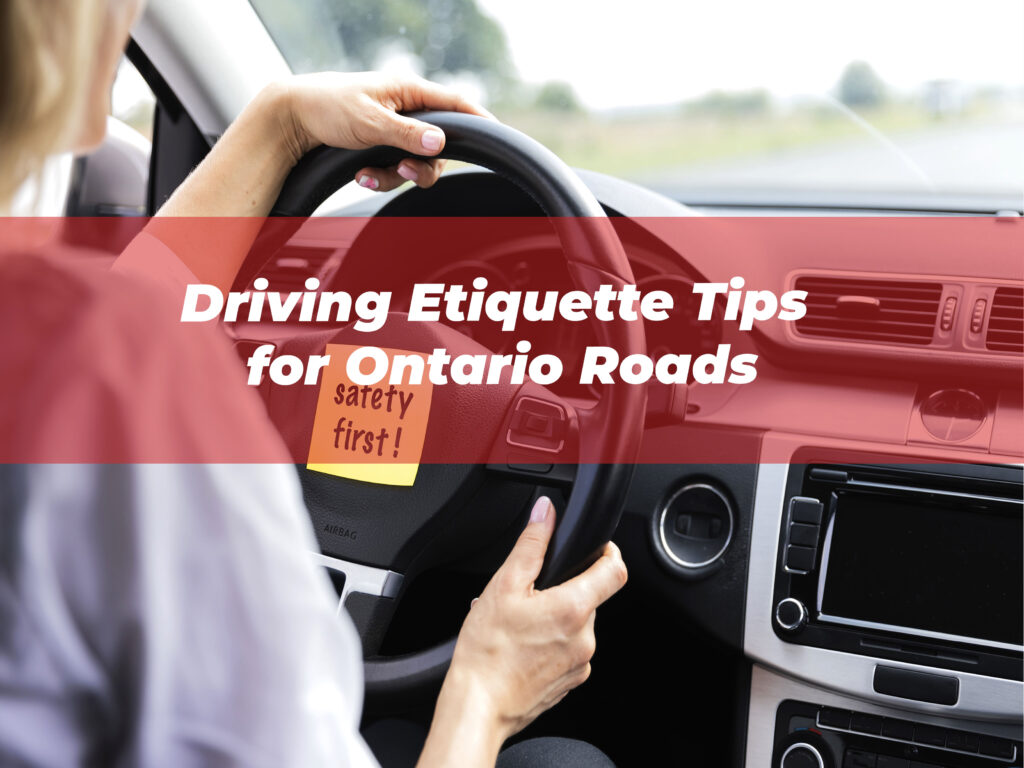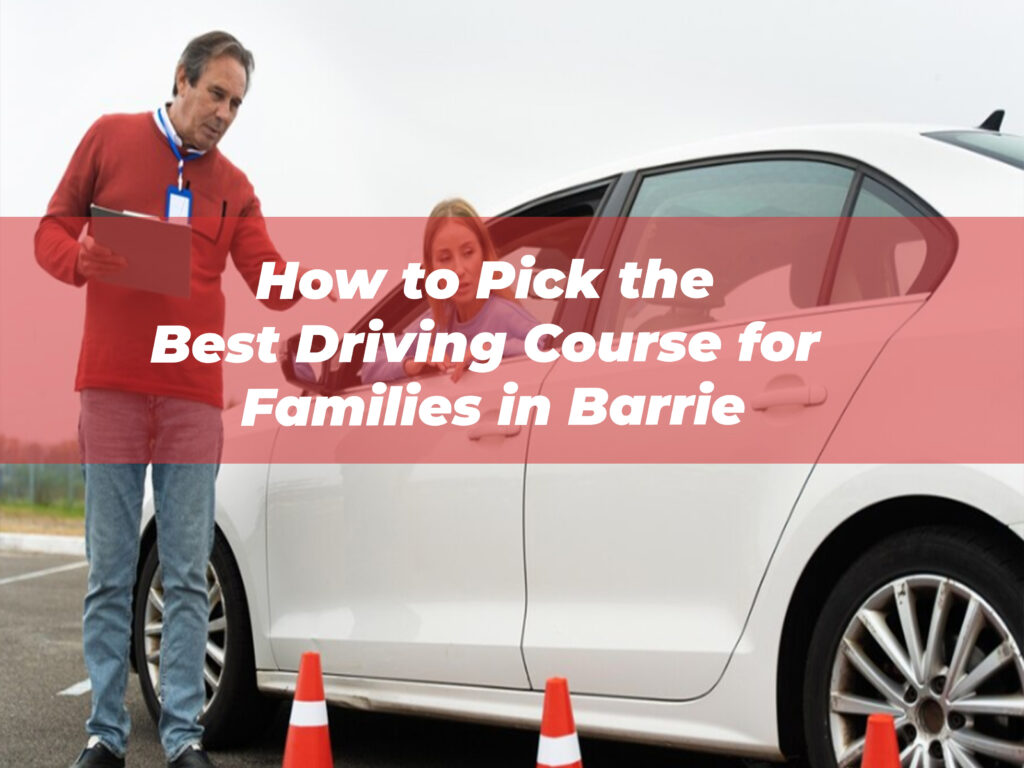Driving Etiquette Tips offers an opportunity to experience some of Canada’s most picturesque routes, from the bustling streets of Toronto to the sweeping landscapes of rural backroads. However, navigating these roads requires more than just basic driving skills. Courtesy, understanding road rules, and possessing a sense of responsibility are equally crucial for keeping Ontario’s roads safe and enjoyable for everyone. Whether you’re a new driver or have been behind the wheel for decades, practicing good driving etiquette makes a difference. This comprehensive guide will cover essential etiquette tips, laws, and practical advice to help you positively contribute to Ontario’s driving scene.
Understanding Ontario’s Road Rules
Before you even start the Driving Etiquette Tips, it’s important to brush up on Ontario’s road rules. These are not just legal mandates but also form the foundation of respectful and safe driving behaviors.
Always Follow Speed Limits
Ontario has strict laws about speed limits, which are designed to ensure safety for all road Driving Etiquette Tips. Urban areas often have limits of 50 km/h, while rural highways generally range between 80 and 90 km/h unless otherwise posted. Highways like the 401 may allow speeds of up to 100 km/h. Always pay attention to speed limit signs, and remember to adjust your speed based on road and weather conditions.
Speeding not only increases your likelihood of accidents but can also result in hefty fines, license demerit points, or even a license suspension under Ontario’s stunt driving laws, especially if you’re caught speeding 40 km/h or more above the limit in zones with limits under 80 km/h.
Proper Use of Turn Signals
Turn signals are a basic yet often neglected part of Driving Etiquette Tips. Using them correctly ensures other road users understand your intentions, reducing confusion and the risk of accidents. Whether you’re changing lanes, turning into a street, or merging onto a highway, signaling well in advance is an essential courtesy.
Know the Right-of-Way Rules
Ontario’s road rules clearly define right-of-way scenarios to avoid confusion at intersections and crossings. For example:
- At 4-way stops, the first vehicle to arrive has the right-of-way. If two cars arrive simultaneously, the car on the right goes first.
- When pedestrians are at a crosswalk, they always have the right-of-way.
- Emergency vehicles with flashing lights override all other traffic. Pull over safely to the side to allow them to pass.
Understanding and Driving Etiquette Tips these rules helps prevent accidents and ensures smooth traffic flow.
Hands-Free Driving Is the Law
Distracted driving is a leading cause of road accidents in Driving Etiquette Tips. Regardless of how much you trust your reflexes, holding a phone while driving is illegal and dangerous. Use a hands-free system or pull over to a safe spot if you need to make a call or send a text.
Courteous Driving Practices
Good driving etiquette isn’t just about obeying the law; it’s also about being considerate of other road users. Courtesy can go a long way in making Ontario’s roads safer and more pleasant.
Maintain a Safe Following Distance
Driving too closely behind another car (tailgating) causes stress and increases the likelihood of accidents, especially in stop-and-go traffic. A good rule of thumb is to keep at least a two-second distance from the car ahead. For higher speeds or during challenging weather, increase this distance to four seconds or more.
Use the Left Lane Appropriately
On highways, the left lane is reserved for passing in Driving Etiquette Tips. Staying in the left lane when you’re not passing can frustrate other drivers and disrupt the flow of traffic. Once you’ve completed your pass, move back into the right lane to allow faster-moving vehicles to overtake.
Be Mindful of Merging Drivers
Allowing space for merging drivers is not just polite but also critical for safety. If someone is trying to enter the highway and traffic permits, adjust your speed or move over to the adjacent lane (if safe) to give them room.
Yield to Pedestrians
Whether you’re at a crosswalk, a school zone, or an unmarked crossing, always yield to pedestrians. This practice is not only courteous but strictly enforced under Ontario’s pedestrian safety laws.
Tips for Driving Etiquette Tips
Ontario’s winters are harsh, and icy Driving Etiquette Tips, snowstorms, and poor visibility can turn a routine drive into a risky undertaking. Adapting your behavior and showing extra courtesy to others becomes even more crucial during the colder months.
Prepare Your Vehicle
Before hitting the road, ensure your vehicle is equipped for winter. This includes switching to winter tires, topping off your windshield washer fluid with a low-temperature formula, and carrying an emergency winter kit with items like blankets, flashlights, and a shovel.
Drive Slower in Snow and Ice
One of the most important winter driving tips is to reduce your Driving Etiquette Tips. Roads can become slippery even if they look clear. Give yourself extra time to brake and make gentle adjustments to the steering wheel to avoid losing control.

Clear Off All Snow and Ice
It’s not just a matter of visibility for you. Snow or ice flying off your car can hit other vehicles, endangering everyone on the road. Take the time to fully scrape and brush off snow and ice from your car’s roof, windows, and lights before driving.
Use the Right Lights
Always activate your headlights in snowy or foggy conditions, even during the day. For heavy snow or near-whiteout conditions, fog lights can enhance visibility for you and other road users.
Sharing the Road with Cyclists and Pedestrians
Ontario is committed to creating more bike- and Driving Etiquette Tips-friendly roads, but this means drivers need to stay alert and respect vulnerable road users. Treat cyclists, pedestrians, and cars as equals when sharing the road.
Follow the 1-Meter Passing Law
Ontario law requires drivers to maintain at least 1 meter of space when passing cyclists. Crowding them or failing to pass safely puts riders at significant risk.
Be Mindful at Intersections
Intersections can be accident hotspots for people on bikes and foot. Look out for cyclists in bike lanes or making turns, and always check your blind spots.
Avoid Door Crashes (Dooring)
“Dooring” happens when a car door is opened into the path of an oncoming Driving Etiquette Tips. To prevent this, use the Dutch Reach method, where you open the car door with your far hand. This forces you to turn and check over your shoulder for approaching cyclists.
Stay Extra Cautious in School Zones
School zones often have young children walking or biking to and from school. Slow down, avoid distractions, and always stop for school buses that are picking up or dropping off kids.
Handling Road Rage
Even the calmest drivers encounter stressful situations on the Driving Etiquette Tips, but knowing how to manage road rage is key to staying safe and preventing a bad situation from escalating.
Don’t Engage with Aggressive Drivers
If another driver is tailgating, honking, or trying to provoke you, avoid eye contact and do not respond with aggressive gestures. Focus on driving safely and allowing them to pass.
Stay Calm in Traffic Jams
Ontario, especially areas like the GTA, is notorious for traffic congestion. Practice patience and use traffic apps to plan alternative routes. Listening to calming music or a favorite podcast can also ease tension during long commutes.
Pull Over if You’re Feeling Angry
If you find yourself becoming frustrated, it’s okay to pull over and take a Driving Etiquette Tips. Taking a few deep breaths or stepping out for a moment can help reset your mindset before continuing your drive.
Final Thoughts
Driving with etiquette isn’t just about following Ontario’s laws; it’s about showing kindness and respect on the road. By prioritizing safety, courtesy, and consideration for others, you can positively impact everyone’s driving experience. From learning and following road rules to preparing for tough winter conditions or calmly handling road rage, every step matters.
Now it’s up to you. Keep an eye out for speed limits, respect pedestrian crossings, and take a breath when stressful situations arise. Ontario’s roads will be better and safer when we all commit to being courteous drivers.










